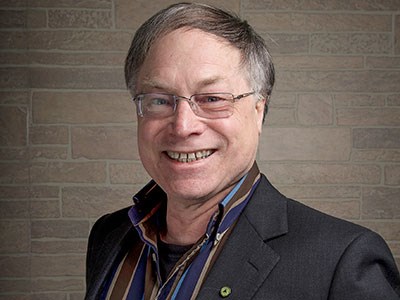Mark Twain is supposed to have said that everybody talks about the weather but nobody does anything about it. Maybe if he were alive today in Northern Ontario he might say everybody talks about Vieux-Ontario, but nobody seems to do anything about it.
Vieux-Ontario is my new name for Northern Ontario. It updates the wonderful French name for the region, Nouvel-Ontario, to take into account recent Census results. The 2016 Census shows that on average people in the here in the North are older than people in the south. This isn’t news, of course: the 2011 Census said the same thing. We Northerners are getting older faster than the rest of the country.
Every newspaper in the North has reported on the demographic difference, but not one had any useful ideas about what to do about it. No city council has adopted a plan to make their city more attractive for older people. The province has no Guidelines on Adapting Yesterday’s Towns for Tomorrow’s People.
It isn’t surprising that we are all talk and no action: older populations elect councils with older brains. Older brains don't always contain the kind of ideas that are being discussed at strongtowns.org, for example. If older brains don't have a subscription to a good source of new ideas they will just go on making decisions to fit the towns they grew up in 40 years ago.
The Northern population has changed in important ways over the last 40 years. Our population pyramid doesn’t look like a pyramid any more. The top part, from 53 years to age 100, still looks like the Great Pyramid at Giza. Below 53 it actually starts to shrink. Three per cent of the Canadian population is 53 years old. Just 2 per cent is one year old. Our population pyramid looks like a cone standing on a wonky cardboard box.
Until the end of the baby boom, more children were being added to the base of the pyramid each year. After the baby boom, the pyramid gets thinner. It seems that baby boomers were not great babymakers. In Vieux-Ontario, the pyramid looks even worse. The top is one third wider — almost 4 per cent of the Northern population is exactly 55. The bottom is narrower. Job losses have taken bites out of the age group from 25 to 49. This depressing pattern repeats itself in each of the cities of Vieux-Ontario. For Timmins, the pyramid is just a bit fat in the middle. North Bay and Sudbury are more top-heavy. Thunder Bay and the Sault are even farther along the road to senility.
Northern cities and towns were built for the growing populations and big families we see in the top half of the population pyramid. Baby boomers and their parents wanted suburban homes, so our towns sprawled outward to provide them. The millennials who followed have different tastes. Research in the U.S. shows that most millennials want smaller families, and more than half want downtown homes. They don’t want to commute and mow lawns. Older people, too, are abandoning larger suburban homes. Some move to smaller apartments near services and shopping; some go into assisted living that is economic only at high densities.
Our changing population pyramids tells us that we should be redesigning our downtowns for young people and pensioners. We should be making pedestrian-based city cores and concentrating education and other services in the cores. We should have local transit for the densest areas. We should be designing downtowns that are exciting places the young and the old.
It will be hard to reverse the population decline in Northern Ontario. We will have to replan our downtowns so they can become places that people want to raise kids in or want to grow old in. That is a very different vision of how communities should be developed.
Good new ideas are out there waiting for our councils to find them. Unfortunately, as physicist Max Planck pointed out, new ideas don’t usually win by convincing the old leaders. They win when those old leaders die off. By then, it may be too late to change direction. And the fresh young brains may have left Vieux-Ontario.



